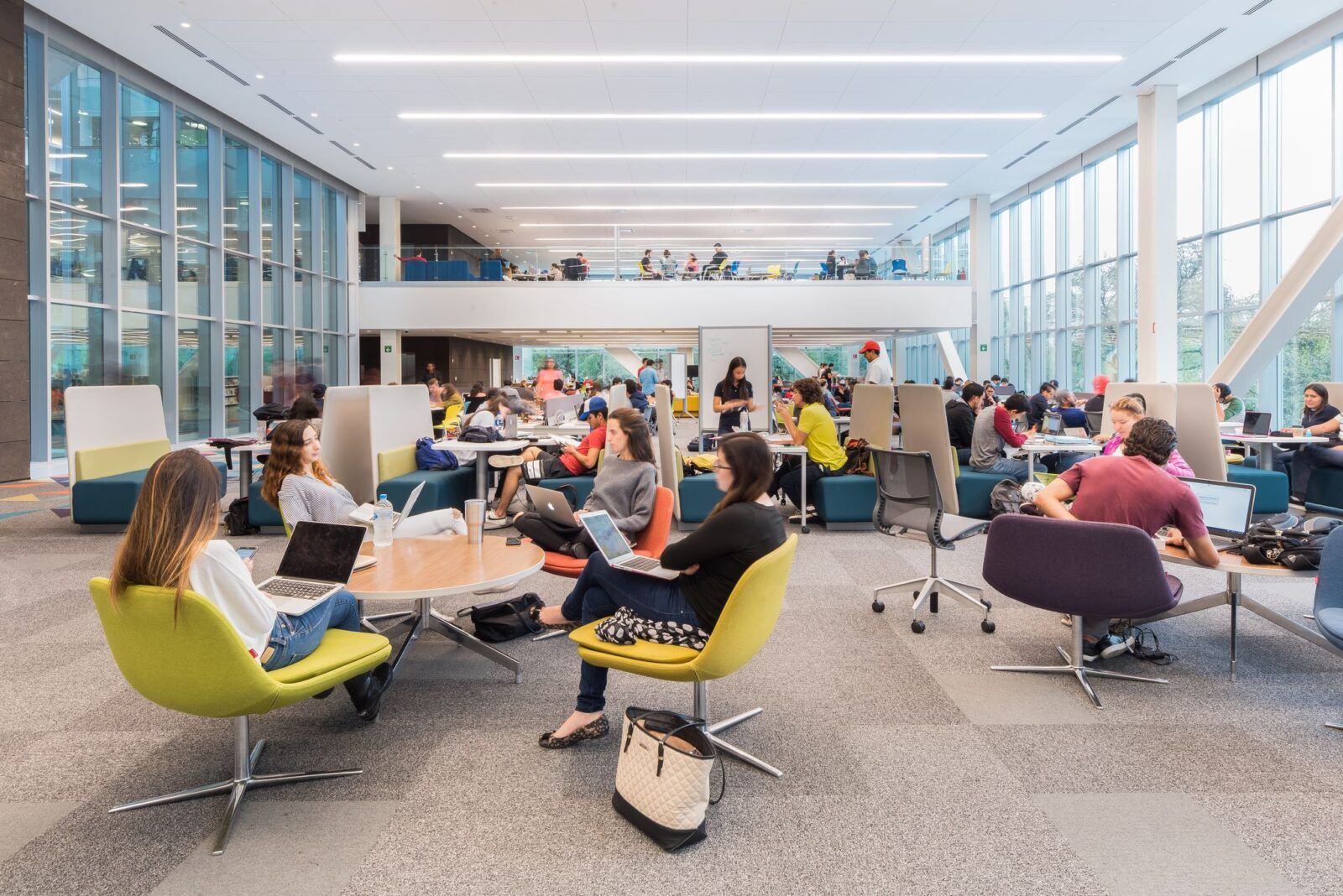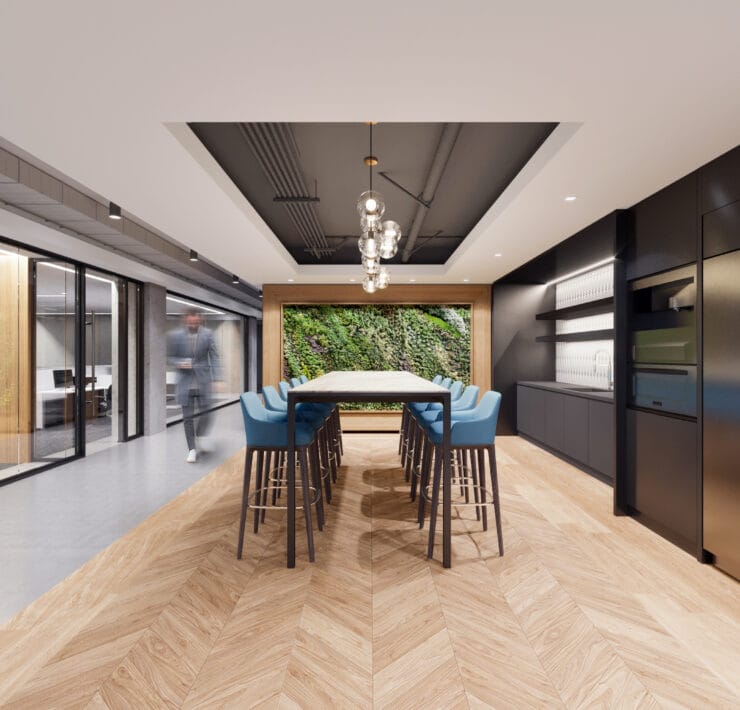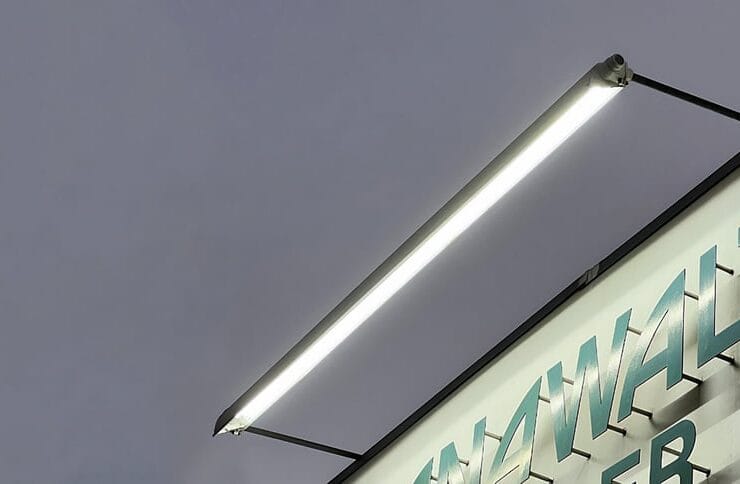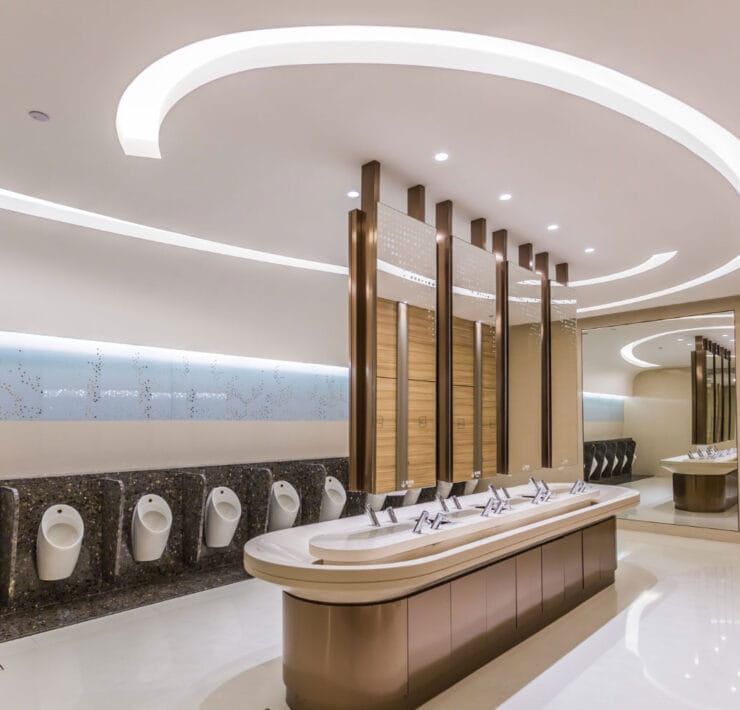Series Contents:
What is human-centric lighting?
Good lighting design accounts for the nature and needs of those inhabiting any space. Human-centric lighting is the field of lighting design which aims to address the physiological impact of artificial lighting on the individual.
Over the past decade, human-centric lighting design research and data spurred new technology and design practices for better harmony with the human circadian rhythm and the natural daily cycle of daylight and darkness. The result? Reduced stress, improved mood and better performance.
Here is a list of the biological and psychological considerations of human-centric lighting, bolstered by recent research and advances of lighting technologies:
Table of contents
Mood
A number of factors can affect an occupant’s mood, including color temperature and lighting intensity. Color temperature, which is measured by the Kelvin scale, ranges from warm (2,700-3,000K) to cool (greater than 5,000K). Warmer color temperatures (yellow, orange, red) are often associated with a romanticized, laid-back mood, while cooler color temperatures (white, blue) correlate to concentration and alertness. 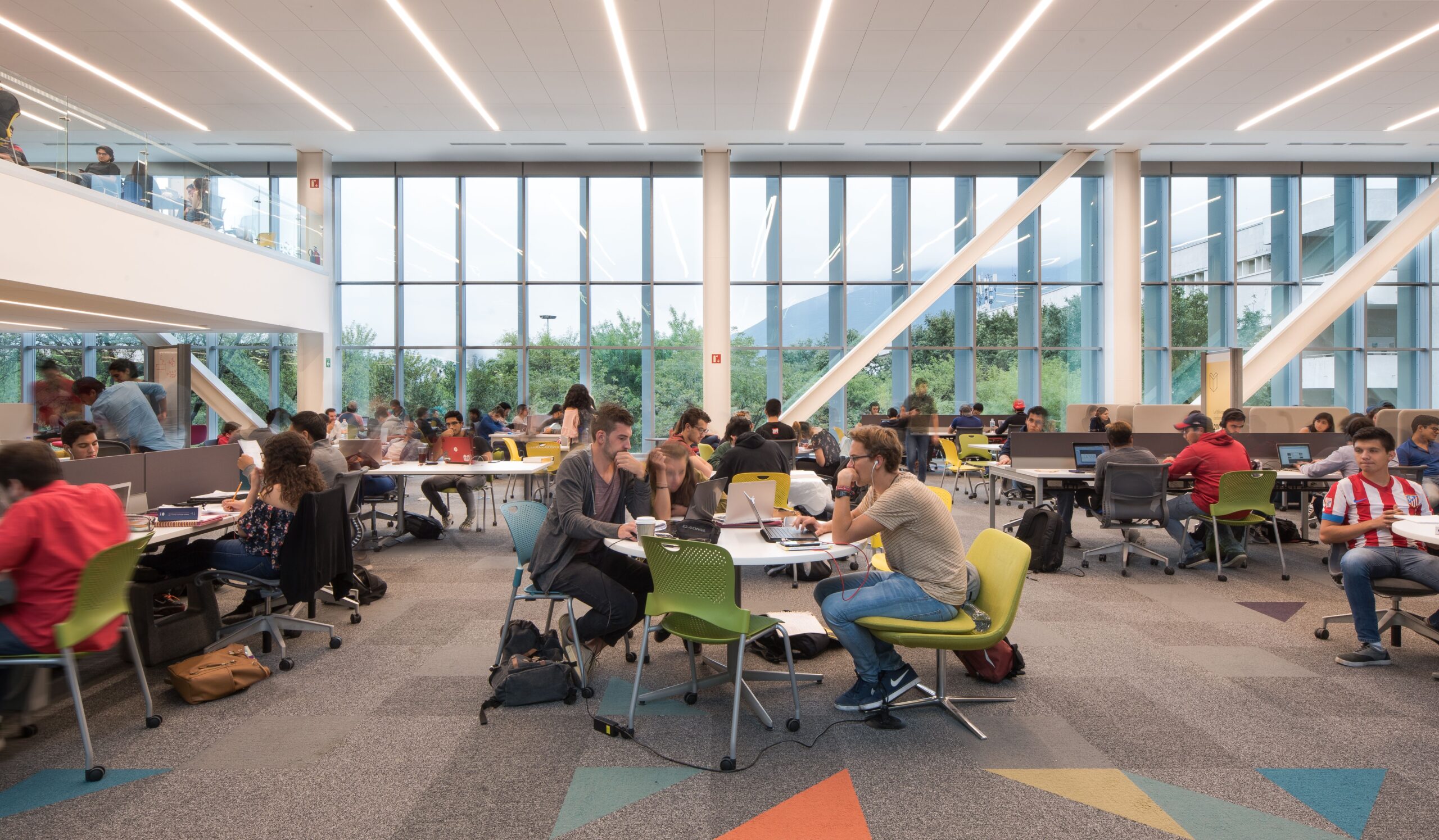
White-tunable lights adjust from cool to warm colors of white light, making them ideal for retail applications that need to provide clear, bright lighting while adjusting to desired mood inductions in different seasons. Full-color tunable fixtures can change from white to any color of light. For example, a commercial office with cool white light by daytime can transition to an evening cocktail party space with bold brand colors.
Productivity
Studies exploring the effect of lighting on productivity abound. Academic performance, morale, concentration and confidence in elementary school students tend to increase when classrooms switch from fluorescent to LED lighting. Students demonstrate improved reading skills in lighting closest to the color temperature of natural daylight.
One of LED lighting’s assets, other than energy efficiency and cost savings, is a color rendering that remains consistent when lights go dim, making LED lights ideal for classroom and office settings. In addition, LED systems can tune color temperature to mimic the effects of changing daylight or to boost productivity. For example, an office environment attempting to improve worker focus, concentration and alertness during afternoon, when people tend to be drowsy after lunch, can adjust the lighting to a cooler color temperature, promoting performance and proficiency.
Socialization
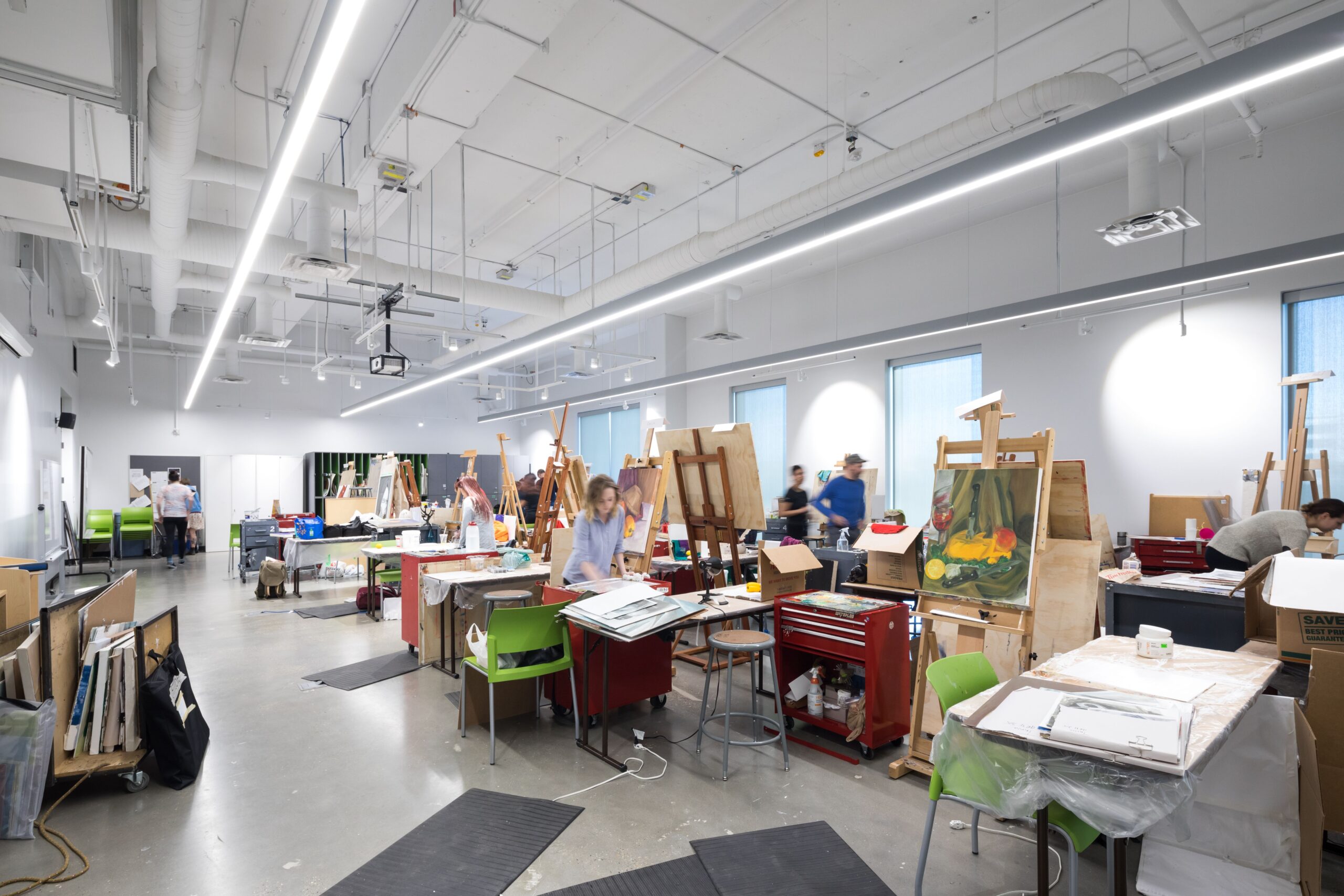
Lighting can stimulate and influence human interaction. Harsh, intense lighting can cast an unbecoming glare, while low, warm lighting can invite connection. Contrast is a crucial consideration. Lighting design ought to factor the ways in which human beings interact with one another; this is the essence of what it means to be human-centric.
Circadian rhythm
Humans function on a daily cycle of sleep and wakefulness. Light is a way to set the body’s clock. Human-centric lighting design takes the natural circadian rhythm of darkness and lightness into account, incorporating changes in light intensity and color temperature during the course of the day’s 24-hour cycle.
Exposure to blue light, in particular, can inhibit the body’s production of melatonin—the hormone that signals to the body that it’s time to sleep. The effect of light color and intensity on one’s mind and body matters. The combination of harvesting daylight and a solid artificial lighting strategy can achieve balance for healthy interior lighting.
Best practices
Lighting affects sleep and work habits. Here are good habits for human-centric lights:
- Start the day with at least an hour of daylight. This sets the circadian clock and may improve mood, productivity and sleep.
- Intermittently go outside during the work day.
- Invest in high-CRI (Color Rendering Index) LED lighting in the home and workplace.
- Power down screens such as TVs, tablets and cell phones at sundown. Limit exposure to blue light before bed—read a book under the soft, pleasant glow of a warm LED lamp. If reading on your cellular or tablet device, invest in an app—or activate a tool—that reduces the amount of blue light emitted on screen.
Above all, be active in thinking what it means to be human when designing, using and activating light.
Alcon Lighting creative director and co-founder David Hakimi works to improve lighting through research, development and education. David strives for efficiency in lighting, affording architects, lighting designers and engineers the ability to maximize LED lighting design and application. David is a graduate of the University of California, Los Angeles, where he received a Bachelors in history. David also studied lighting design at IES in Los Angeles. He traces his and Alcon Lighting’s commitment to innovation, accountability, quality and value to lessons learned from his father, Mike Hakimi, a lighting craftsman, salesman and consultant in Southern California for more than four decades. Today’s lighting for commercial use requires a deep, complete understanding of smart lighting systems and controls. David takes pride in his lighting, energy controls and design knowledge. He is driven by the desire to share his insights into lighting specification and application. This quest to share his knowledge was the impetus for David to create Insights, Alcon Lighting’s blog and resource center for helping the reader understand lighting and its application to space.

